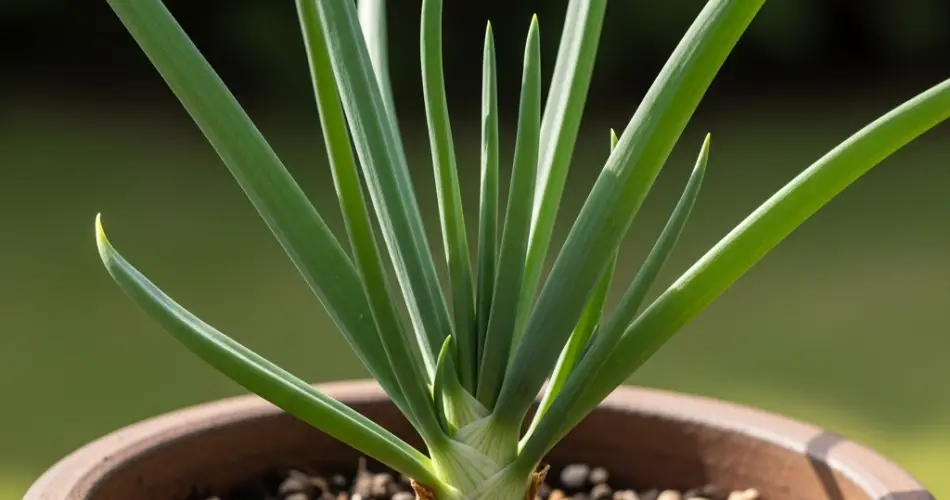Onions are a staple in nearly every kitchen, used in countless dishes for their bold flavor and aroma. The good news is that you don’t need a large garden to grow them—onions can thrive in small household pots. Compact onion farming is perfect for urban gardeners, apartment dwellers, or anyone looking to make the most of limited space. With a bit of planning and care, you can enjoy fresh, homegrown onions right from your balcony, windowsill, or patio.
Choosing the Right Type of Onion
There are three main ways to grow onions: from seeds, from sets (small onion bulbs), or from transplants. For compact, pot-based growing, onion sets or transplants are the easiest and most reliable option. They sprout quickly and are less sensitive to environmental fluctuations than seeds.
You’ll also need to consider the type of onion based on your day length:
-
Short-day onions are ideal for southern climates with mild winters.
-
Long-day onions do best in northern regions with extended daylight during summer.
-
Intermediate-day onions are great for areas in between.
For container gardening, smaller onion varieties, like bunching onions (also known as green onions or scallions), are particularly well-suited. However, full-sized bulb onions can also be grown successfully in pots with proper spacing.
Choosing the Right Pot
The pot you choose should be at least 20–25 cm (8–10 inches) deep to allow for proper root development. The width depends on how many onions you want to grow—each bulb needs around 10 cm (4 inches) of space. A 30–40 cm (12–16 inch) diameter pot can comfortably grow 6 to 8 onion plants.
Ensure the container has good drainage holes at the bottom. Onion roots dislike waterlogged soil and can rot easily if drainage is poor.
Soil Preparation
Onions grow best in loose, well-draining soil that’s rich in organic matter. Use a high-quality potting mix and amend it with compost or aged manure to give your plants a nutrient boost. Avoid compacted or heavy soil, which can hinder bulb development.
The ideal pH for onions is slightly acidic to neutral, between 6.0 and 7.0. If your soil mix is too alkaline, adding a small amount of peat moss can help balance the pH.
Planting the Onions
If using sets or transplants, plant each onion about 2–3 cm (1 inch) deep with the pointed end facing up. Space them around 10 cm (4 inches) apart to give the bulbs room to expand. For green onions, you can space them more closely, about 3–5 cm (1–2 inches) apart, since you’ll be harvesting them before they form large bulbs.
After planting, water gently and place the pot in a location with full sun—onions need at least 6 hours of sunlight per day to develop properly.
Watering and Care
Consistent moisture is key for healthy onion growth, especially during bulb formation. Water when the top inch of soil feels dry, keeping the soil evenly moist but not soggy. Overwatering can lead to rot, while underwatering may result in small or split bulbs.
As onions grow, they may begin to push through the soil. That’s normal—don’t mound soil around the bulbs, as they need some exposure to air and light to mature properly.
Feeding Your Onions
Onions are moderate feeders. If your soil mix is already rich in compost, you may not need additional fertilizer for the first few weeks. Once the plants are established, you can feed them every two to three weeks with a balanced liquid fertilizer or organic options like fish emulsion or compost tea.
Switch to a low-nitrogen fertilizer once the bulbs start forming, as too much nitrogen at this stage can lead to excessive leaf growth at the expense of the bulb.
Dealing with Pests and Problems
Onions in containers are less prone to pests than those grown in the ground, but it’s still important to stay vigilant. Common pests include onion maggots, aphids, and thrips. If you notice yellowing leaves or signs of infestation, treat the plants with neem oil or insecticidal soap.
Good air circulation and proper spacing help prevent fungal diseases. Remove any diseased or damaged leaves promptly to keep the plants healthy.
Harvesting Your Onions
The timing of your harvest depends on the type of onion you’re growing. Green onions can be harvested once they reach about 15–20 cm (6–8 inches) tall. Simply snip off the leaves or pull the entire plant for use.
Bulb onions are ready to harvest when the leaves begin to yellow and fall over. Stop watering at this stage to let the bulbs mature and cure in the soil. After a few days, gently pull the onions from the soil and lay them out in a dry, well-ventilated place to cure for 1–2 weeks. Once the outer layers are dry and papery, trim the roots and tops, and store the onions in a cool, dry place.
Regrowing from Kitchen Scraps
You can also grow onions by regrowing scraps. Cut off the root end of an onion, leaving about 1 cm (½ inch) of the base. Place it in water until roots appear, then transfer it to a pot of soil. This method works well for green onions and provides a continuous supply with minimal effort.
Compact onion farming in household pots is an easy, space-efficient way to grow a kitchen essential. Whether you’re after tender green shoots or full-size bulbs, onions adapt well to container life with the right care. From planting to harvesting, the process is simple, rewarding, and perfectly suited for small-space gardening.



